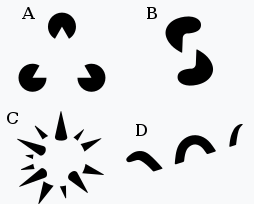Text Gestalt: Stroke-Aware Scene Text Image Super-Resolution
author: Jingye Chen, Haiyang Yu, Jianqi Ma, Bin Li, Xiangyang Xue institution: Fudan University, The Hong Kong Polytechnic University conference: AAAI 2022 github: https://github.com/FudanVI/FudanOCR/tree/main/text-gestalt
Gestalt Psychology (格式塔學派): 又叫做完形心理學(德語:Gestalttheorie)是心理學重要流派之一。由馬科斯·韋特墨(1880-1943)、沃爾夫岡·苛勒(1887-1967)和科特·考夫卡(1886-1941)三位德國心理學家在研究似動現象的基礎上創立。格式塔是德文Gestalt的譯音,意即「模式、形狀、形式」等,意思是指「動態的整體(dynamic wholes)」。有以下理論原則: - 心理功能完整性原則: 人腦的運作原理是整體 - 心理物理學同型性原則: 知覺經驗和大腦活動之間有確定的聯繫 舉例: 圖形A可以被知覺為三角形,儘管在事實上並未畫三角形。
Abstract
they usually treat text images as general images while ignoring the fact that the visual quality of strokes (the atomic unit of text) plays an essential role for text recognition.
Inspired by Gestalt Psychology, we put forward a Stroke-Aware Scene Text Image Super-Resolution method containing a Stroke-Focused Module (SFM) to concentrate on stroke-level internal structures of characters in text images.
Specifically, we attempt to design rules for decomposing English characters and digits at strokelevel, then pre-train a text recognizer to provide stroke-level attention maps as positional clues with the purpose of controlling the consistency between the generated super-resolution image and high-resolution ground truth.
Furthermore, since the proposed SFM is only used to provide stroke-level guidance when training, it will not bring any time overhead during the test phase.
Figure 1: For incomplete or blurred images, detailed information (e.g., spots or strokes) play a significant role during recovery. Our method can generate recognizable English and Chinese text images with the guidance of stroke details.
Methodology
Figure 2: The overall architecture of our method. It contains two modules, including a Pixel-wise Supervision Module (PSM) to recover the color and contour of text images and a Stroke-Focused Module (SFM) to highlight the details of stroke regions.
Pixel-wise Supervision Module
- The existing super-resolution backbones usually follow this design:
- Employ a series of stacked CNN layers to build up a backbone for extracting features, whose height and width are the same as the original images while containing more channels;
- Utilize a pixel shuffle module containing multiple CNN layers to reshape the generated maps. Consequently, a super-resolution image is generated with a larger size.
- We follow (TSRN, Wang et al. 2020) to append a STN (Jaderberg et al. 2015) before the backbone to alleviate this problem.
- We denote the $HR$ images as $I_{HR}$ and the generated $SR$ images as $I_{SR}$. The loss is calculated as follows:

Stroke-Level Decomposition

- According to Unicode Han Database, there are five basic strokes of Chinese characters including horizontal, vertical, left-falling, right-falling, and turning.

- We attempt to create stroke encoding for English characters and digits:
- Break down the characters and digits in more simplified structures. We reduce the total category number for the recognition models to generate better-learned and fine-grained supervision.
- Represent each character as a sequence of these basic strokes (see Figure 3(d))
- Concatenate the stroke sequences of each character and pad a stop symbol “eos” in the end (see Figure 3(e)).
Stroke-Focused Module
- To exploit more fine-grained attention maps, we pre-train a Transformer-based recognizer on two synthetic datasets, including Synth90k and SynthText with stroke-level labels following (Chen, Li, and Xue 2021b).
- More specifically, given the character-level labels $c_{GT} = {c_{1}, c_{2}, …, c_{t}}$, we decompose each character and concatenate them to construct the stroke-level labels $s_{GT} = {s_{1}, s_{2}, …, s_{t’}}$, where $t$ and $t’$ denote the maximum length of labels at two different levels $(t ≤ t’ )$.
- When reaching convergence, we discard
the sequence prediction $y_{pred}$ supervised with cross-entropy loss during training, and only leverage the sequence of stroke-level attention maps generated from the Multi-Head Self-Attention Module as stroke-level positional clues. - Specifically, we denote the attention maps of HR images as $A_{HR} = { A^{1}{HR}, A^{2}{HR}, …, A^{t’}{HR} }$ and $SR$ images as $A{SR} = {A^{1}{SR}, A^{2}{SR}, …, A^{t’}_{SR} }$, then employ an $L1$ loss to constrain these two maps as follows:

Overall Loss Function
Finally, we construct the overall loss function as follows:
 where $λ_{SFM}$ balances the weight of these two loss functions.
where $λ_{SFM}$ balances the weight of these two loss functions.
Experiments
Choices of Parameters
TextZoom contains 17, 367 LR-HR pairs for training and 4, 373 pairs for testing. In terms of different focal lengths of digital cameras, the test set is divided into three subsets: easy, medium and hard.
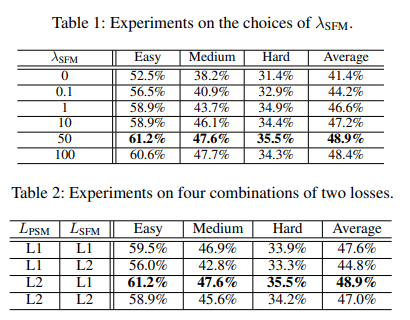
Experimental Results
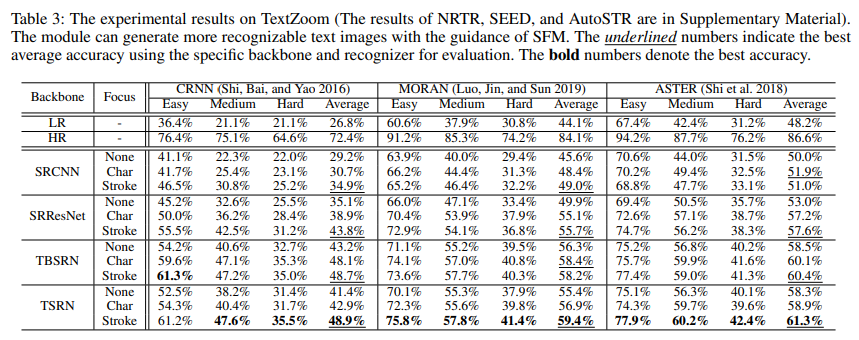
TBSRN: Transformer-Based SuperResolution Network, Chen, J TSRN: Text Super-Resolution Network, Wang, W
Discussions

Figure 4: Examples of the generated images. “None” means no text priors are taken into account, while “Char” and “Stroke” denote the model is trained with character-level guidance and stroke-level guidance. We choose TSRN as the backbone.
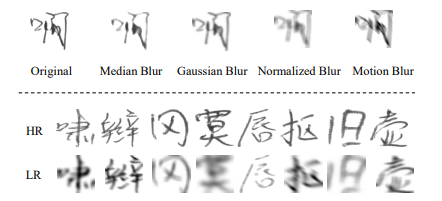
Figure 5: Manually design LR-HR pairs to construct Degraded-IC13. The upper row are four types of blur and the lower row are some examples of LR-HR pairs.
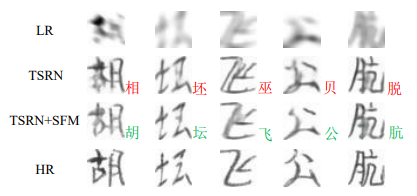
Figure 6: Examples of the generated Chinese characters.
